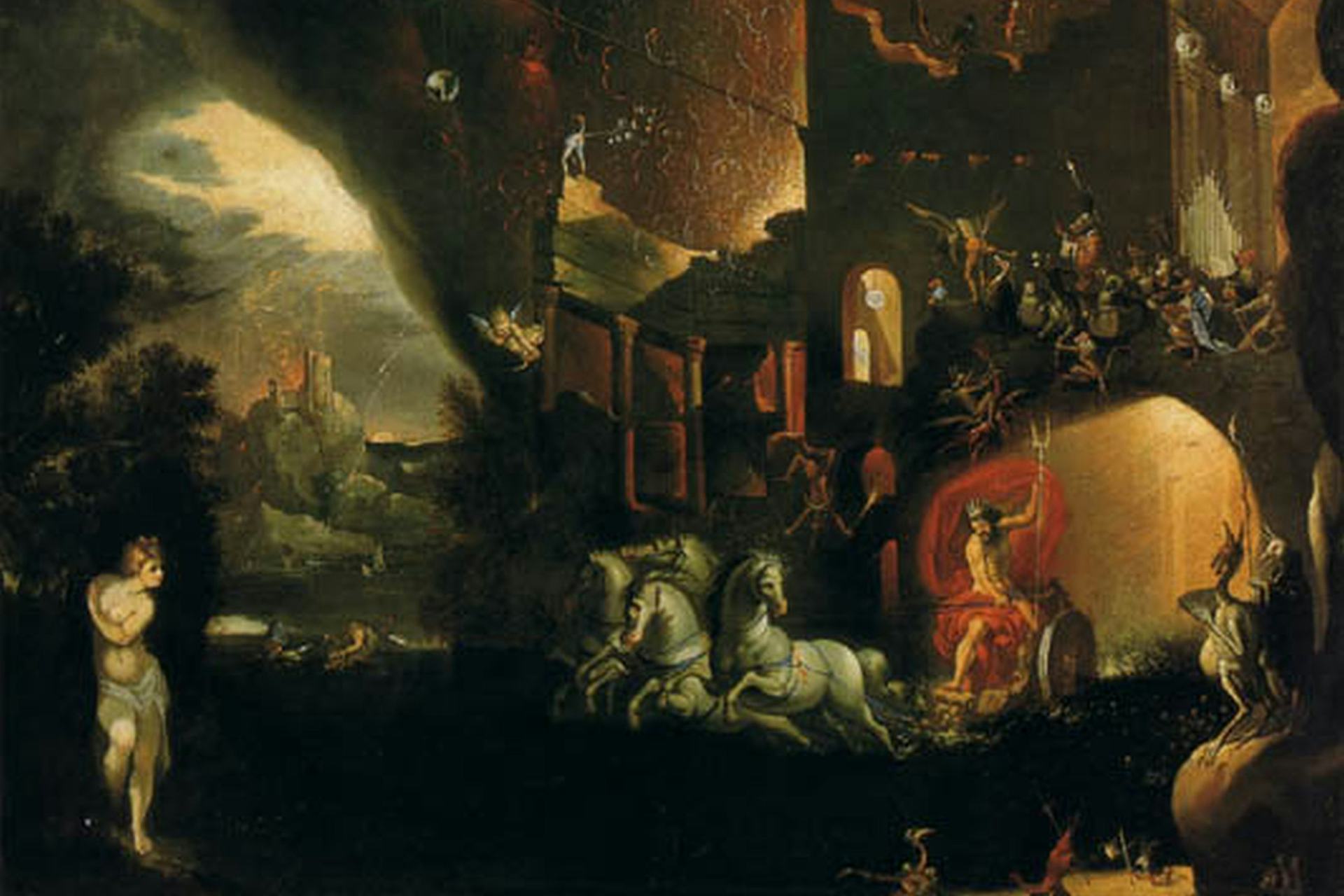Tartarus

Hades' Arrival at Tartarus by Joseph Heintz II (ca. 1640).
Wikimedia CommonsPublic DomainOverview
Murky Tartarus was one of the first entities to come into existence, together with Chaos, Gaia, and Eros. He was one of the mysterious primordial gods and represented the deepest part of the Underworld. Located far below even Hades, Tartarus was a dreaded place of darkness and punishment reserved for only the most nefarious sinners—sinners like Tantalus, Sisyphus, and Ixion. Tartarus’ son with Gaia, Typhoeus, was a monster worthy of his dreaded father.
Etymology
The etymology of “Tartarus” (Greek Τάρταρος, translit. Tartaros) is unknown.
Pronunciation
English
Greek
Tartarus Τάρταρος (translit. Tartaros) Phonetic
IPA
[TAHR-ter-uhs] /ˈtɑr tər əs/
Alternate Names
Though technically a distinct part of the Underworld, the name “Tartarus” was sometimes used interchangeably with other names for the Underworld, such as “Hades” or “Erebus.”
Titles and Epithets
The darkness of Tartarus was sometimes emphasized through its epithets, which included words like ēeroeis, “murky.”
Attributes
Tartarus was a primordial god but also a location. Dark and grim, Tartarus was said to be far below the earth—lower even than Hades.
According to Homer, Tartarus was located in “the deepest gulf beneath the earth…as far beneath Hades as heaven is above earth.”[1] Hesiod similarly located Tartarus “in the depth of the wide-pathed Earth,”[2] so remote that “a brazen anvil falling down from heaven nine nights and days would reach the earth upon the tenth: and again, a brazen anvil falling from earth nine nights and days would reach Tartarus upon the tenth.”[3]
Far below the roots of the earth, Tartarus was surrounded by a bronze wall with iron gates.[4] Some said it was further separated from the rest of creation by the fiery river Phlegethon.[5] These barriers helped to enclose the monsters and sinners imprisoned in Tartarus.
In addition to imprisoned monsters and sinners, Tartarus was inhabited by a handful of grim gods associated with the Underworld, including Nyx (“Night”), Hemera (“Day”), Hypnos (“Sleep”), Thanatos (“Death”), Hades, and Persephone.[6]
Family
According to Hesiod’s Theogony, Tartarus did not have any parents. Instead, he came into existence spontaneously at the beginning of the cosmos, together with Gaia and Eros (and after Chaos).[7] But in another version of the cosmogony, Tartarus was the child of Gaia and Aether (“Upper Air”).[8]
Family Tree
Mythology
Tartarus, a dark primordial landscape below the earth and even Hades, was the home of a handful of sinners and hated enemies of the gods. Zeus, for example, cast his defeated foes into Tartarus—first Cronus and the Titans,[16] and later the monster Typhoeus (Tartarus’ own son, perversely enough).[17]
In some traditions, the practice of using Tartarus as a prison can be traced back even earlier, almost to the dawn of creation: Uranus, the first ruler of the cosmos, cast his children into Tartarus, where they remained for some time before finally breaking free and castrating him. Later, Uranus’ son Cronus imprisoned the terrible Hecatoncheires and the Cyclopes (his brothers) in Tartarus until they were freed by Zeus and helped defeat Cronus. Finally, Zeus imprisoned Cronus and the other Titans in Tartarus, posting the Hecatoncheires as their guards.[18]
Eventually, Tartarus came to be seen as the place where the gods punished the most wicked sinners. In the philosophical dialogue Gorgias, Plato wrote that Zeus selected three of his mortal sons—Minos, Rhadamanthys, and Aeacus—to judge the dead after they themselves had died. These three judges were said to determine who would suffer eternal punishment in Tartarus.[19]
Among the eternal sinful residents of Tartarus were Tantalus, an impious king (his crime varied depending on the source) who was tortured with insatiable thirst and hunger; Sisyphus, who tried to cheat death and was therefore forced to roll a boulder up a hill, only to have it roll back down as soon as he reached the top; and Ixion, who tried to seduce Zeus’ queen and was punished by being bound to a perpetually-spinning wheel.
Pop Culture
Tartarus continues to feature in modern adaptations of Greek mythology, including Rick Riordan’s Percy Jackson and the Olympians novels and the TV series Hercules: The Legendary Journeys. It tends to be represented as a typical hellish landscape, complete with “fire and brimstone” and damned sinners groaning beneath the burden of eternal punishment.